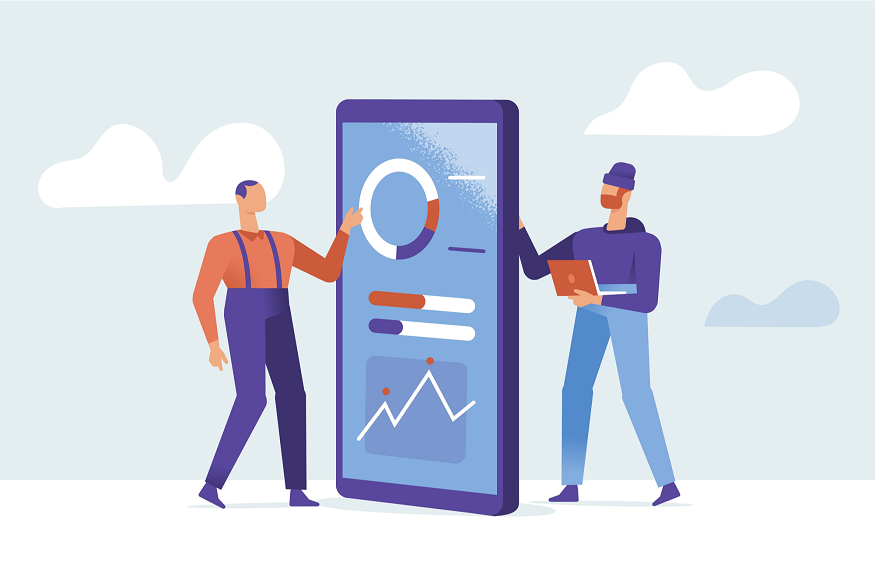How self-service business analytics works and their best practices

What is self-service business analytics? Self-service business analytics is a part of modern business intelligence that lets users visualize, analyze, and make decisions based on business data without depending on analysts and IT. It provides all users the agility to gain insights from data put, even if they don’t hold any expertise or experience. It allows all users to gain insights from data quickly and easily helping businesses and organisations to get data faster.
Business owners don’t need to request IT or analysts if they have access to self-service analytics and wait for their answers. But, they should also not completely rely on assumptions or intuitions which result in poor analysis and can cost heavily.
But how self-service business analytics works and its impact on the organization.
The working of self-service business analytics
- Integration of data: Self-service analytics’ first step is to look for various data sources like databases or spreadsheets. Integrating data-driven from different sources for analysis is the most important work in self-service analytics. Connectors of databases can make it easier for data integration.
- Exploring data: Once the data is integrated, exploration is done to know which data information will work for them or not. The business owner or user can use tools to explore data easily.
- Preparation of data: Preparation of data is the most crucial one in the process of self-service analytics. Business users and owners can transform the raw data into useful and handling data that is compatible, concise, and convenient to read and analyze.
- Queries and analysis: While analyzing data businesses and organizations can create queries by selecting any filter that they want to analyze.
- Visualization of data: Visualization of data in analytics plays a major role as we know analyzing becomes much easier to understand and analyze data. Charts, graphs, and diagrams are more eye-catching and easily and quickly understandable.
- Interaction of data: Self-service analytics helps business users to make changes on the spot and see the effect due to that. This makes them know whether or which factor is affecting business analytics.
- Sharing: Lastly, using self-service analytics allows you to share the report easily with your peers or colleagues which enhances the quality as they can check it again and tell if any errors.
Core benefits of self-service analytics
- The analysis and information need of business is constantly changing with more and more questions which calls for deeper and deeper analysis which is quite difficult if traditional analytics.
- Self-service analytics eliminates the confusion and complication of data and streamlines the process of generating and building reports.
- It enhances the speed with minimum cost as self-service analytics works on Business Intelligence hence it is speedy and because it does not require manual hard work it reduces cost. Traditional analytics takes time also because everything is done physically from gathering information. Transforming it, presenting it to building report. Also, it is costly because of the same reason that the manual workforce cost is higher.
- Self-service analysts even help those non-technical users who don’t have expertise in analytics and don’t have much knowledge of it.
Other benefits of self-service analysis are as follows:
- Generate Real-time report
- Eliminate data warehousing
- Improve access to data
- Reduce overhead cost
- Decrease the workload of Analysts or IT department
- Quick decision making
While self-service offer many ways for organizations to get more from their data, there are some risk and challenges in self-service analysis.
Some challenges of self-service analysts are-
- Thin data governance:Balancing the analytics needs of the business with IT security requirements is what is required to build a data-driven culture. But you can only get there with proper data. Clean data and standardized data definitions ensure users can confidently make decisions while taking permissions and sharing capabilities to ensure data access and transparency.
- Limited data exploration:When users have a question about their data, they can explore freely and find the answer. Self-service analytics platforms that include capabilities can help workers of any skill level to go deeper in one area, or explore others to their curiosity.
- Low levels of data literacy:When business users lack analytics skills, they resist diving into their data. In addition to training, a self-service analytics tool that uses AI and machine learning can help business users along by automatically providing suggestions. The right tool can automatically generate and prioritize charts and graphs to help business users to attain the best decisions, faster.
- Barriers to user adoption:If end users have to go back and forth between applications to gain data insights, there is a greater risk of human error, and many times, they won’t make the extra effort to know the depth of analytics. By embedding dashboards, charts, and tables into applications like ERP, and CRM, workers can make data-driven decisions without leaving their applications.
Best practices of self-service analytics
- Automated Data:Self-service analytics begins with a company’s raw data, usually stored in multiple systems which are gathered from different places.
- Enterprise Data Catalog:Enabling users to quickly get the data they need is critical for self-service analytics. A catalog combines all of the company’s trusted data, allowing users to easily find, prepare, and publish data sets that they can confidently analyze and share.
- Data Analytics Platform:A self-service platform of data analytics lets business users freely explore and analyze their data with a user-friendly interface, interactive visualizations, charts, and tables. The best self-service technologies also let business users create and share their analytics apps, dashboards, and reports.
- Governance:Supporting the entire architecture is a layer. This includes governance processes, security and compliance, data quality controls, and data usage audits, ensuring that the right people have access to the right data.
Conclusion
Self-service business analytics inUSA gives business users of sales, marketing, and customer support, the data they need to make powerful decision-making that positively impact their business. Organizations that don’t have self-service analytics, their team has a burden on their shoulder.






